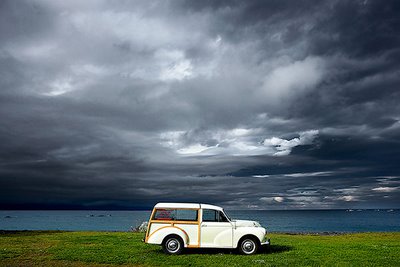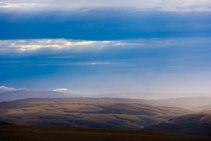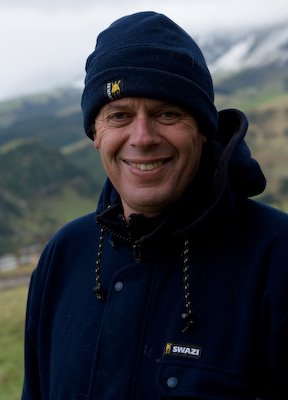 For over two billion years, through the apparent fancy of her endless differentiations and metamorphosis the Cell, as regards its basic physiological mechanisms, has remained one and the same. It is life itself, and our true and distant ancestor.
For over two billion years, through the apparent fancy of her endless differentiations and metamorphosis the Cell, as regards its basic physiological mechanisms, has remained one and the same. It is life itself, and our true and distant ancestor.
Albert Claude
It is not necessary that you leave the house. Remain at your table and listen. Do not even listen, only wait. Do not even wait, be wholly still and alone. The world will present itself to you for its unmasking, it can do no other, in ecstasy it will writhe at your feet.
Franz KafkaKai ora tatou:
In what seems like another life, I spent a week with master landscape photographer, Faye Godwin. At the time I wasn’t really into landscape; it was one of many genre choices for me. But I loved her work and the opportunity to learn from her was not to be missed. In the end, it really affirmed that what I was doing was the right path for me-at the time. What she did talk about, however, was the importance of getting to know your subject. In the case of landscape photography, it meant going back again and again, seeing it in different lights and weathers, peeling the layers off the onion. Only then would we be able to get to the essence of the subject. The thought stuck and, as I began to put more and more time into studying the works of the masters, I realised that the Greats inevitably seemed to do this. For Ansel Adams it was Yosemite, for Eugene Atget it was Paris, while Edward Weston favoured Point Lobos. They all seemed to have a place that spoke to them.
Then earlier this year I discovered Haast, in particular the Okuru Estuary. With the time and opportunity to visit and revisit, I began to see new things. At first I photographed the obvious and some happy meteorological accidents, but later as these possibilities exhausted themselves, and things got tougher and tougher, I had to find new ways to photograph the estuary, or rather, to look deeper. I wanted to dig beneath the surface and consider what I was seeing, to fit into some sort of framework. So I kept photographing, studying, analysing and reflecting on what I saw on my monitor. Time and again, I would be convinced that I had “done” the estuary, only to come upon a new line of approach. The estuary became a kind of litmus paper the direction my photography was taking. It was only later that I began to realise that it was an indicator for where my life was at and by extension, where I was at.
It helps, from time to time, to take stock. Last week I got out my photographs of the estuary, arranged them in order of date, and mulled them over. Then I went to the Coast to interview someone for my new book.
Once again I went to the estuary, trying to stay as open-minded as I could, to respond to what presented itself. I took the Leica lens and a tripod. I wanted to keep it simple, to remove as many technical decisions as possible. One lens/focal length, one ISO, hyperfocal distance focusing. I wanted to listen to the Moment.
I went down to the edge of the water at sunset. The tide was in, but the wind was blowing and, frankly its restlessness wasn’t what I was seeking. I wanted to find a point of infinite stillness, a moment of exquisite unity, where time and space held their breath, that precise but difficult-to-define point of crossover between night and day. That meant letting go and listening to the rhythm of the light, the movement of the air and finding the Centre of the Moment.
The Point of Balance. Once again I was brought face-to-face with a mediaeval concept I learned

about at university, the concept of mésure (moderation and balance). The idea at that time was that everything should be in balance; light and dark, good and evil, pride and humility, that excess in anything was the path to destruction. That learning has had a huge influence on how I design my photographs and informed my arrangement of the picture space. I needed to feel for the moment and bring the elements before me into a state of balance. The yin/yang symbol, a visual metaphor for the Tao, says the same thing. There can be no absolutes, only degrees of relativity.
As I studied the scene and began photographing, searching for that point of mésure, the wind dropped and the light faded. Sky and water began to come into some sort of tonal balance. Before me the colour had faded away and what was left was a monochromatic blue landscape. The water had faded to a deep blue-black and the sky was a dusky blue. The only land was a a thin-lipped strip across the river, with a few tentative houses clinging to it. What intrigued me was the thin cloud hanging almost invisible above the village. Then, as day faded into night, as so often happens, there was a last flicker in the sky, much like the final flare before a light bulb burns out. For a moment a shaft of light struck the white holiday home across the river. It glowed incandescent and alive. Then it sank into the growing gloom.
As some you know, I have studied martial arts. For a number of years I studied a form of Wu Shu, commonly (and incorrectly) known as Kung Fu. I put it down while my children were little.
Lately I have returned and have begun to seriously study Tai Chi Chuan in its martial form (not the feel-good, watered-down form you see in Pilates or city parks at 6am). A fundamental concept is balance and the idea of finding the Centre then moving around that point, to put it one way. It sounds very simple; it is fiendishly difficult to achieve, because it is not just physical. And there are many years of training required to get any degree of competence. Mastery is a goalpost that keeps moving further and further away. Even the simple act of breathing contains a lifetime of study. In many ways Tai Chi bears an extraordinary similarity to the act of photography. There are infinite levels of understanding, and you have to focus to the point where you become what you are doing.
I continued on into the gloom, lost in Time and Space. As the balance between sky and water narrowed, I made more pictures. Directly before me the incoming tide was now covering a log in the water. The exposures had moved out to 30”, flattening and soothing the restless water. I moved the log into the frame. In the deepening shadows it had become a mysterious shape, a metaphor, a Doorway for the Dead. It sat there in the tide like some sort of key to a deeper mystery, raising one knowing eyebrow and challenging me to seek to know more. Then the remaining light, which had held on to the very last, sputtered and went out. It was time to leave.
When I edited the images a couple of days later, I was intrigued. In some way I have yet to define, my understanding had altered, had metamorphosed. It was as if a number of disparate but parallel threads were knitting together. The photographs had the simplicity I was seeking, yet they asked more questions than they answered.
As I edited the images, looking for the best way (if any) to crop them, I found myself moving the horizon closer and closer to the upper frame edge, compressing the sky into an ever-narrowing area of the picture. I began limiting the information along the top of the photograph. It felt right. It felt accurate.
Just now the future is full of uncertainty and possibility, and I am peering over the horizon of today, like the navigators of old, hoping to spy landfall soon.
Arohanui e

 The first member out of the box is Andrew Spencer, who has sent in this really awesome image.
The first member out of the box is Andrew Spencer, who has sent in this really awesome image.








